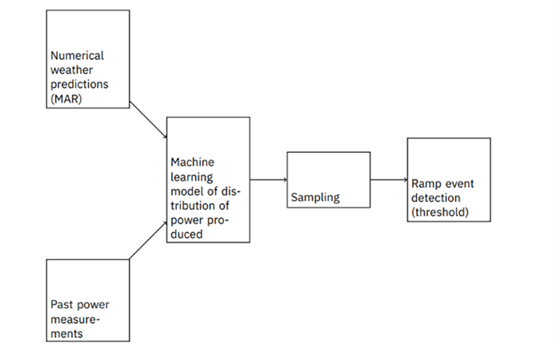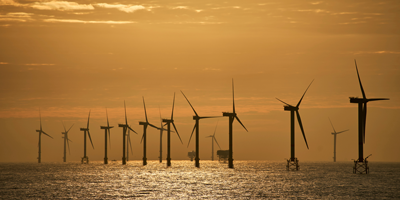14 October 2025
Offshore Ramping Events Detector
To improve predictions of offshore extreme weather events we developed in collaboration with the University of Liège an ML-based ramp event detector.
Context
Ramping events are sudden (in less than 1 hour), significant changes in wind power generation (≥30% of total capacity) that can threaten grid stability. Accurate forecasting of these events is essential for maintaining system security and enabling proactive grid management. These types of events are hard to forecast and yet, there is no ramping events forecasting plug-in solution on the market.
Elia initiated investigation into this topic as Belgium’s offshore wind capacity expected to increase 2.5× by 2030. The greater the capacity, the more significant is the impact of ramp-up events on wind generation and grid stability.
Approach
In collaboration with the University of Liège, we developed a machine learning-based ramp event detection system aimed at improving short-term forecasting of wind power fluctuations. The system leverages:
- Historical weather data
- Real-time METAR inputs (aviation weather reports)
- Recent power generation measurements
The core of the approach is based on the Modèle Atmosphérique Régional (MAR), a regional climate model originally designed for polar studies and now adapted for Belgium. MAR provides high-resolution (5 km) weather forecasts over a 550 × 550 km² domain centered on the Elia wind farms.

- Wind speed (U+V)
- Temperature
- Specific humidity
- Surface pressure
- Sea surface temperature (SST) over the North Sea
The project uses an indirect method for ramp detection:
- First, it forecasts wind power generation.
- Then, it derives ramp events from variations in the forecasted generation.
Model Versions and Performance
Version 1: GMM + MAR Only
- Architecture: Gaussian Mixture Model (GMM)
- Input: Numerical weather predictions (MAR), averaged over the wind farm
- Forecast Horizon: Up to 6 hours
Version 2: Deep Learning + MAR Grid
- Architecture: CNN/MLP input layer, LSTM hidden layer, GMM/NSF output layer
- Input: MAR grid data at 5 km resolution
Version 3: GMM + MAR + METAR + Recent Power
- Architecture: GMM
- Input: MAR, METAR stations, recent power generation
- Forecast Horizon: 1 to 6 hours
Version 3 showed the most promising results, especially for short-term forecasting, with METAR data providing redundancy during gust fronts and improving robustness.
Results
The project demonstrates the potential of combining regional climate modeling with machine learning to enhance wind power ramp event detection. The indirect forecasting approach, particularly in Version 3, significantly outperforms traditional operational forecasts and offers a scalable path toward more reliable grid management.
Phase 1 of operational testing at the National Control Center (NCC) demonstrated that the tool could significantly improve early warning capabilities.
Next steps
In October-December 2025 the National Control Center (NCC) will run Phase 2 operational testing to be able to draw the conclusions in Q1 2026. The approach is potentially scalable to other offshore geographical zones and/or could be enhanced with data from neighboring regions. The Elia project team is open to knowledge exchange and collaboration opportunities.
Partners
  |
 |
 |
 |
 |
 |
 |
 |




